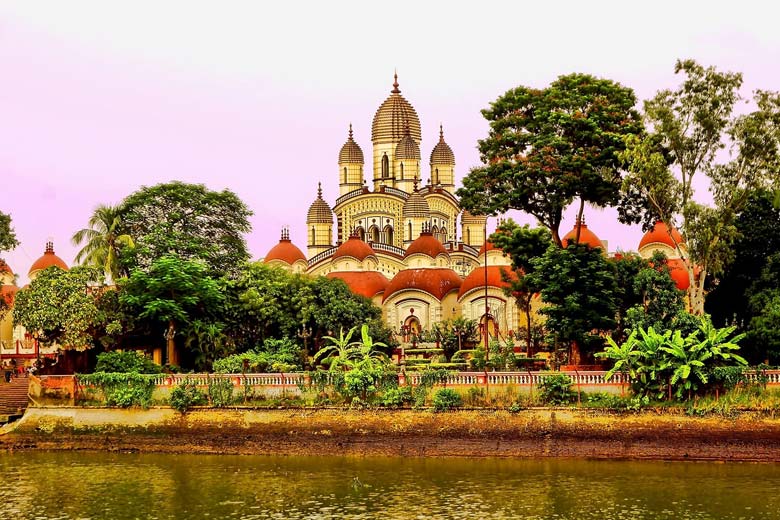Places to Visit in Kolkata
Kolkata and Howrah straddle the Hooghly River with Kolkata on the east side, Howrah on the west. Across the Hooghly from Kolkata’s old quarter, the Howrah district—which holds Kolkata’s massive train station—is a constantly expanding suburb? On the eastern side of town is Salt Lake City, a planned, spotlessly clean residential community.
In Kolkata itself, the Howrah Bridge spills into Bara Bazaar, the vibrant wholesale market area that anchors the city’s commerce. North Kolkata includes Bara Bazaar and Kolkata University and extends to the distant neighborhood of Chitpur and the Jain Temple in Tala. The heart of Central Kolkata remains B.B.D. Bagh (Binoy-Badel-Dinesh Bagh, formerly Dalhousie Square), where commerce and government have been concentrated since British times. Central Kolkata also holds the expansive Maidan Park, the crowded bazaar at New Market, and the up market shops and restaurants on Park Street. At the south end of the Maidan are the Victoria Memorial and Kolkata’s racecourse. South Kolkata has the Kali Temple and the late Mother Teresa’s hospice in Kalighat and the National Library and zoo in Alipore. To the east is the Science City complex, comprising a huge auditorium and museum with scientific and educational exhibits.
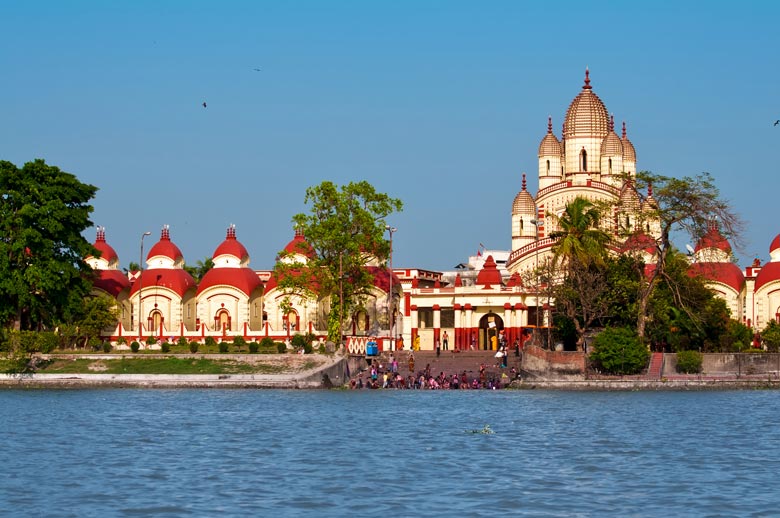
Places to Visit in Kolkata
The hottest weather arrives in April and grows increasingly stifling through June, when the monsoon season begins. Monsoons run through mid-September and cool Kolkata down, though the occasional downpour means you can expect a soaking or two. Try to come between October and March, when the weather is most temperate. For an extraordinary visit, see Kolkata during the greatest Bengali festival of the year, the Durga Puja (Durga is an incarnation of Kali, Kolkata’s patron goddess). Colorful, handmade Hindu idols, sometimes in excess of 20 ft tall, are ceremoniously moved in large processions through the streets for several hours before reaching the river and being immersed in the Hooghly. The pujas (homage; literally, “worship”) take place over several days in September and October; confirm the dates be-forehand with the tourist office or an Indian travel agent. The rites and processions have an amazing vibrancy, often blending tradition with innovation; some idols even honor contemporary themes such as re-cent flood victims or the film star of the moment.
Tourist Places in North Kolkata
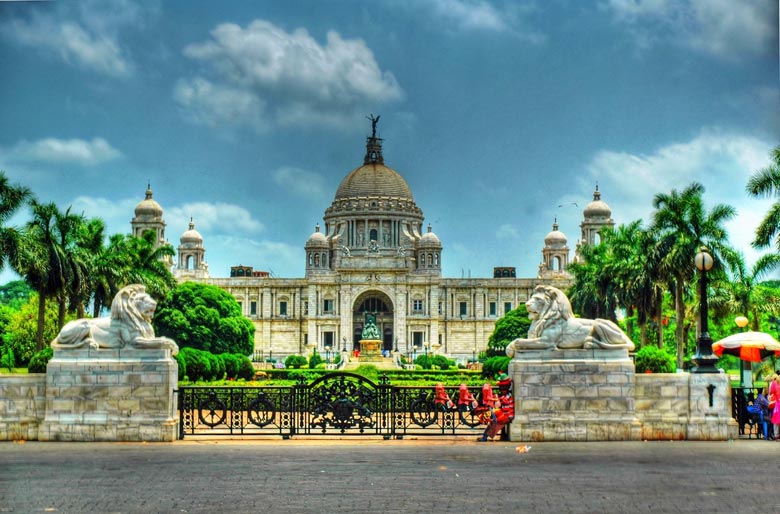
Places to Visit in North Kolkata
The streets in northern Kolkata are more crowded and narrower than that elsewhere in the city. This—the old village of Sutanuti—is where the Indians lived while the British spread their estates east and south of Fort William and Dalhousie Square (B.B.D. Bagh). The architecture is charming, reflecting some Italian and Dutch influence.
North Kolkata’s attractions are somewhat scattered. You’ll need to take taxis at least sporadically. The bazaar areas surrounding Mahatama Gandhi Road are at once intensely commercial and residential; tourists are thin on the ground here, despite the fascinating sights and atmosphere. You may attract some curious stares, but anyone you stop and speak to is bound to be friendly and welcoming.
#1. Belur Math Shrine
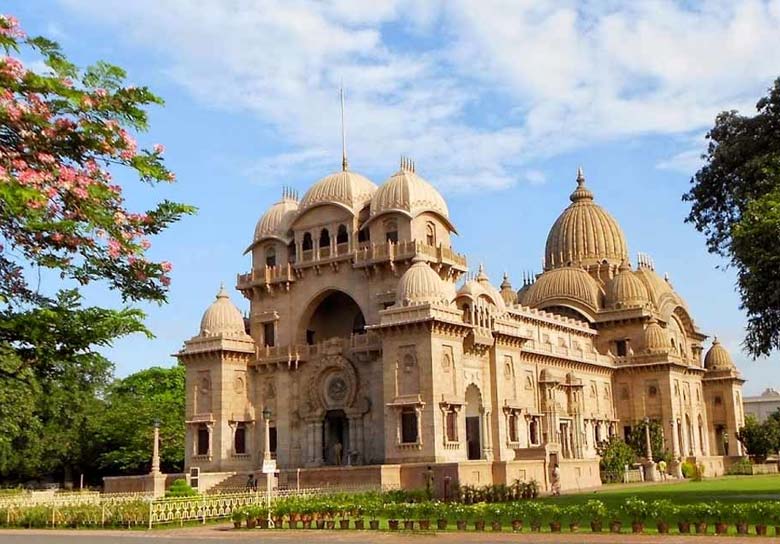
Belur Math Shrine Kolkata
This is the headquarters of the Ramakrishna Mission, a reform movement inspired by Ramakrishna Paramahansa, who died in 1886. Having forsaken his privileged Brahmin heritage, Ramakrishna preached the unity of religious faiths and an adherence to altruistic values for all people. His disciple, Swami Vivekananda, established the mission in 1898. The Belur Math Shrine resembles a church, a temple, or a mosque, depending on where you’re standing. Somber aarti (chants and hymns) are sung in the immense prayer hall every evening; visitors are more than welcome.
#2. College Street
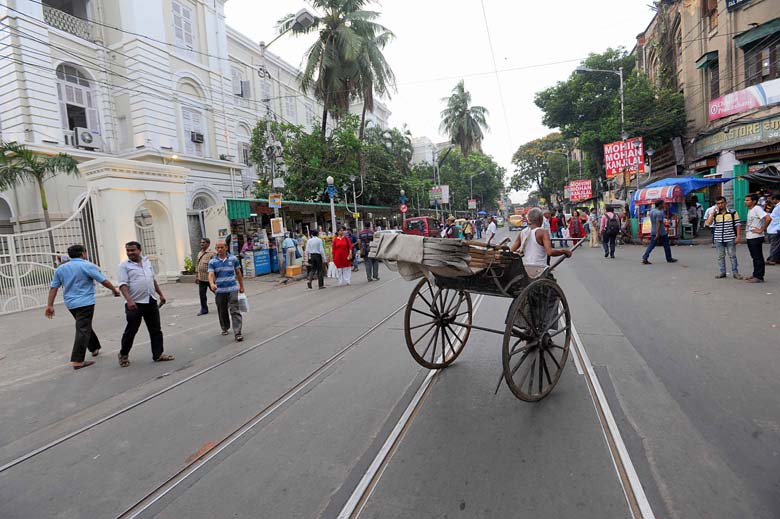
College Street Kolkata
Part of the animated area around Kolkata University, the sidewalks of College Street are stuffed with bookstalls where you just might discover a treasure. The neighborhood establishments here, like the classic Indian Coffee House (2115 Bankin Chatterjee St.), are crowded every night with students and intellectuals. Opposite the cof-fee house, a huge colonial building houses the university’s Presidency College, arguably the most prestigious seat of learning in India.
#3. Dakshineshwar Kali Temple
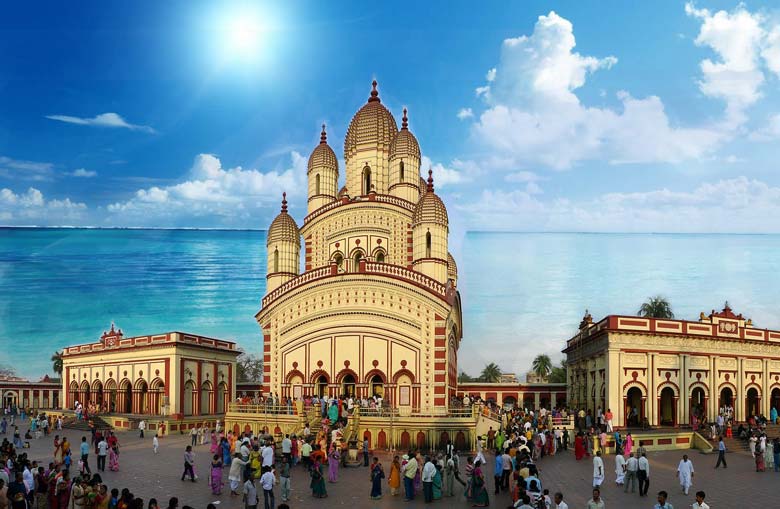
Dakshineswar Kali Temple
Far north along the Hooghly, this 19th-century complex with 13 temples is a major pilgrimage site for devotees of Shiva, Kali, Radha, and Krishna. The variety of temples makes this site a good introduction to the Hindu deities for the uninitiated. It was here that the 19th-century mystic Ramakrishna had the vision that led him to renounce his Brahmin caste and propound altruism and religious unity. His most famous disciple, Swami Vivekananda, went on to be a major force in the intellectual and spiritual growth of Kolkata and founded the Ramakrishna Mission, headquartered in the Belur Math Shrine (La- above). Ramakrishna’s room here is a museum.
#4. Howrah Bridge
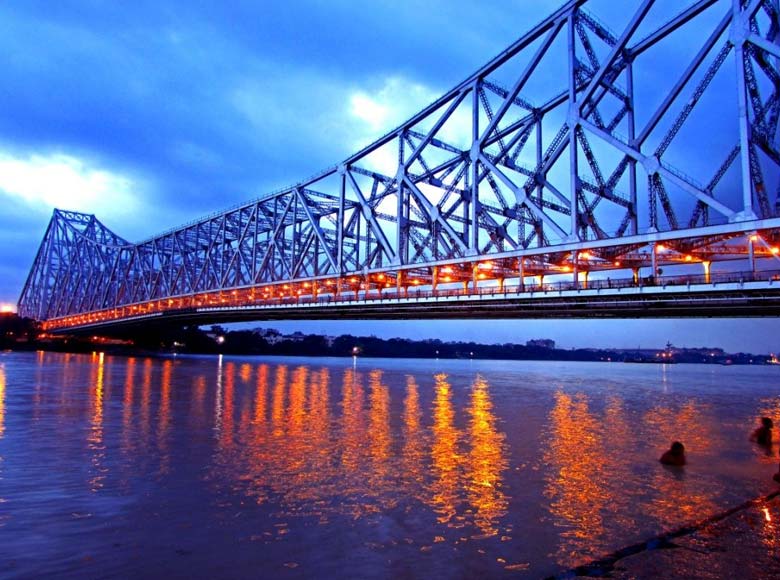
Howrah Bridge
The Howrah train station almost dumps you onto this structure, and the bridge in turn dumps you just north of Bara Bazaar in the heart of old Kolkata. Indeed, it seems more like a bazaar itself than a simple transport link between Howrah and Kolkata. Bordered by thin walkways, the bridge’s eight lanes of chaotic traffic hear 2 mil-lion people each day in rickshaws, cars, scooters, bicycles, pushcarts, and animal-drawn carts. The web of girders stretches 1,500 ft over the Hooghly.
#5. Kumartuli
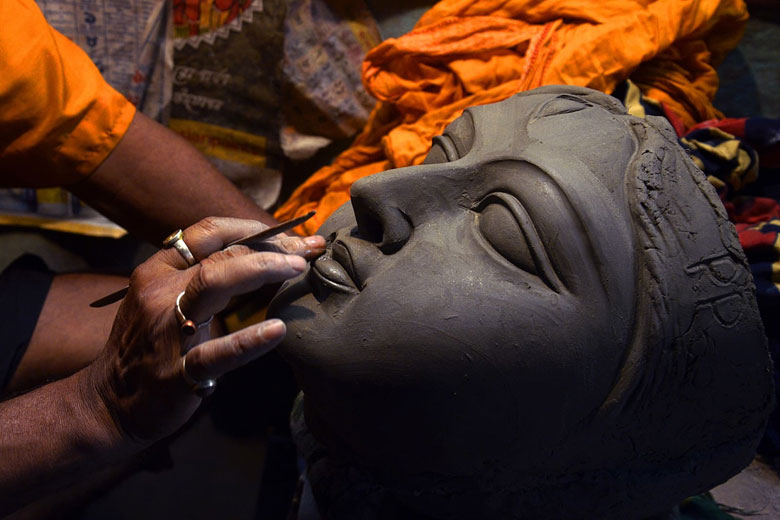
Kumartuli
In this area, countless potters create the millions of clay images that serve as idols during Kolkata’s Hindu festival season.
#6. Marble Palace
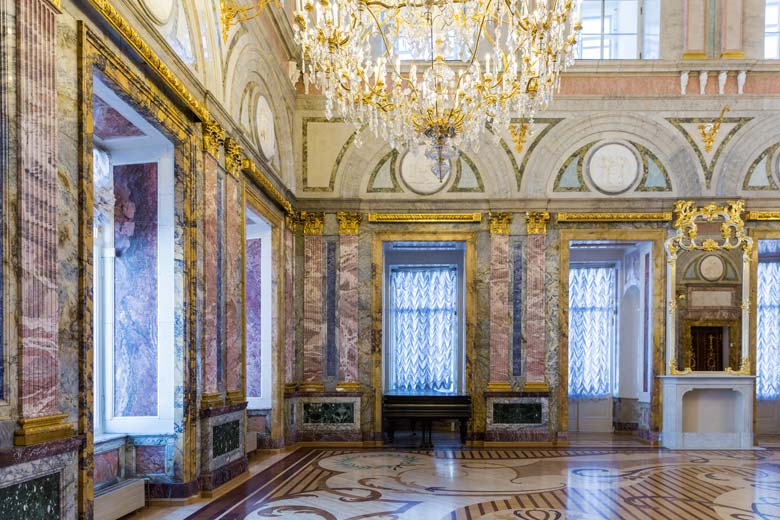
Marble Palace
One of the strangest buildings in Kolkata was the inspiration of Raja Rajendra Mullick Bahadur, a member of Bengal’s landed gentry. Mullick built the palace in 1855, making lavish use of Italian marble. It’s set behind a lawn cluttered with sculptures of lions, the Buddha, Christopher Columbus, Jesus, the Virgin Mary, and Hindu gods. Near a small granite bungalow (where Mullick’s descendants still live), a large pool is home to some exotic birds with large headdresses. The palace has an interior courtyard, complete with a throne room where a peacock often struts around the seat of honor. The upstairs rooms are downright Baroque: Enormous mirrors and paintings cover the walls (including works by Reynolds, Rubens, and Murillo), gigantic chandeliers hang from the ceilings, and hundreds of statues and Far Eastern urns populate the rooms. The floors bear multicolored marble inlay on a giant scale, with a calico effect. Even the lamps are detailed creations, especially those on the staircases, where metal women are en-twined in trees with a light bulb on each branch. Movie producers use the palace for Hindi films.
#7. Nakhoda Mosque
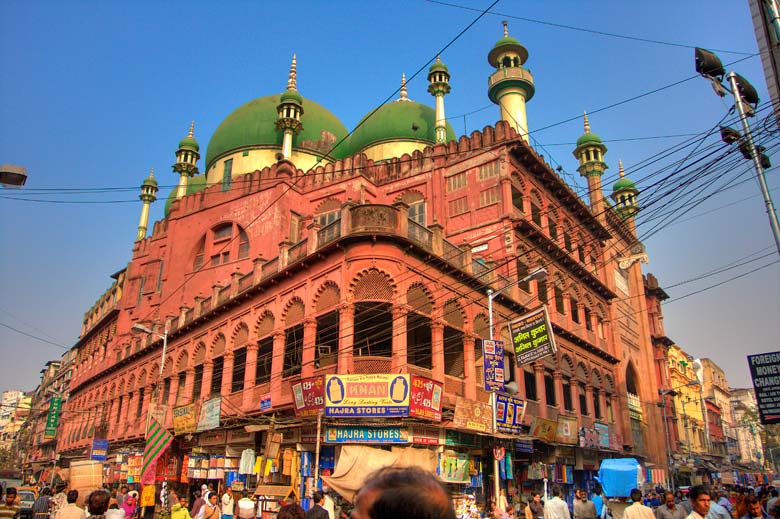
Nakhoda Mosque
This massive red sandstone mosque, which can hold 10,000 worshipers, was built in 1926 as a copy of Akbar’s tomb in Agra. Each floor has a prayer hall. The top floor has nice views of the streets below, which are crowded with stalls selling everything from paperback editions of the Koran to greasy kebabs.
#8. Paresnath Temple
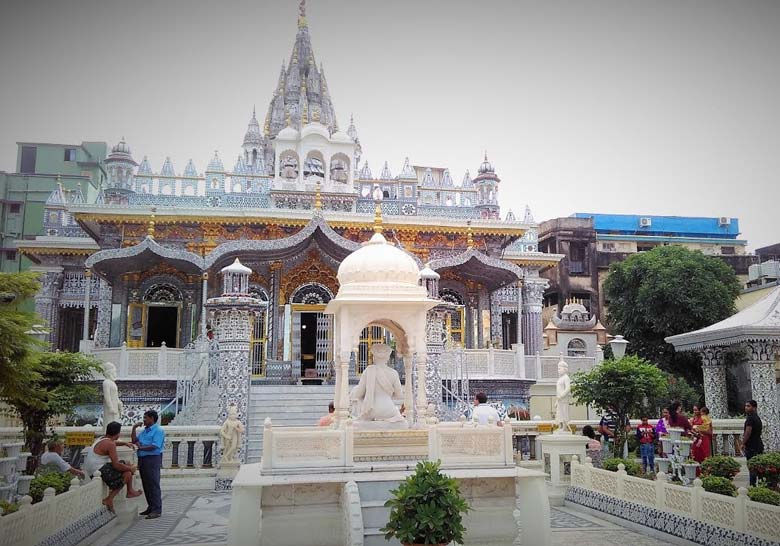
Parasnath Temple
Built in 1867 and dedicated to Sitalnathji, the 10th of the 24 tirthankaras (perfect souls), this Jain temple is a flamboyant one, filled with inlaid-mirror pillars, stained-glass windows, floral-pat-tern marble floors, a gilded dome, and chandeliers from 19th-century Paris and Brussels. The garden holds blocks of glass mosaics depicting European figures, and statues covered with silver paint. Paresnath is an unusual place of honor for the typically ascetic Jains.
#9. Rabindra Bharati University Museum
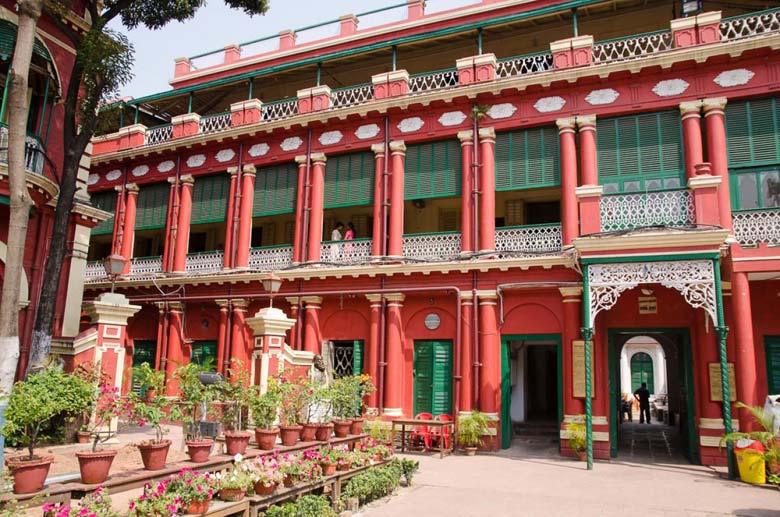
Rabindra Bharati University Museum
Within the walls of Rabindranath Tagore’s cheerful, lemon-yellow home (which opens onto tree-lined galleries on the second floor), the university fosters cultural activities and maintains a display of paintings by artists of the Bengali school. The nerve center of Kolkata’s intellectual activity around the turn of the 20th century, Tagore’s abode now holds a wealth of memorabilia, including beautiful sepia photographs of the poet (quite fetching as a young man), his family, and his contemporaries.
Tourist Places in Central Kolkata and the Maidan
The British first built Fort William in the middle of a dense jungle. When disagreements led the local Bengali ruler, Siraj ud-Daula, to attack and destroy it, the British response was a quick and decisive battle led by Robert Clive. Following the Battle of Plassey (some 160 km/100 mi north of town), which transformed the British from traders into a ruling presence in 1757, the forest was cut down in order to provide a clear line for cannon fire in case of attack. It is really from the year 1757 that modern Kolkata traces its history, and from the new, impenetrable Fort William (completed in 1773) that the city began its ex-plosive growth.
Starting just north of the fort, central Kolkata became the commercial and political heart of the city. It was here that the British conducted business, and here that they built their stately homes. The immense area cleared for British cannons is now Kolkata’s 3-square-km (2-square-mi) park, the Maidan, and central Kolkata now goes beyond the Maidan to B.B.D. Bagh square and most of the commercial and residential areas to the east of the giant park.
#10. B.B.D. Bagh
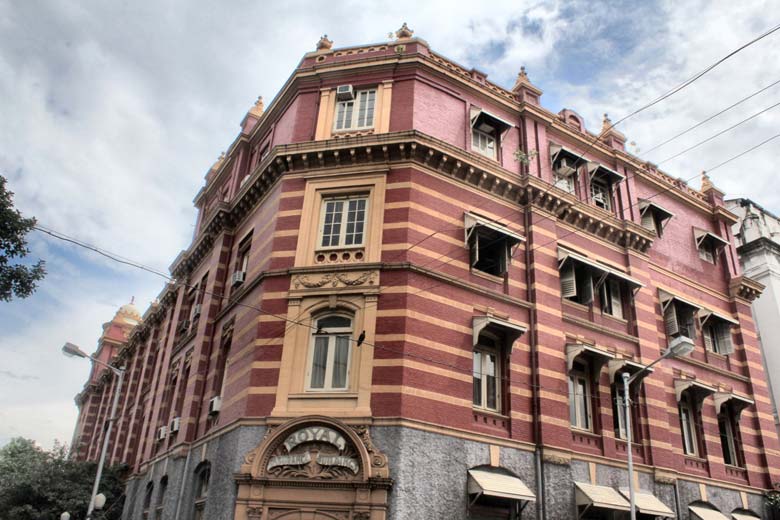
B B D Bagh
The hub of all Kolkata, this square is still often referred to by its former name, Dalhousie Square. Once the administrative home of the East India Company, it later gave way to late-Victorian buildings used by the Colonial Civil Service and now houses the Indian government bureaucracy. Foot traffic is thick here.
#11. Chowringhee
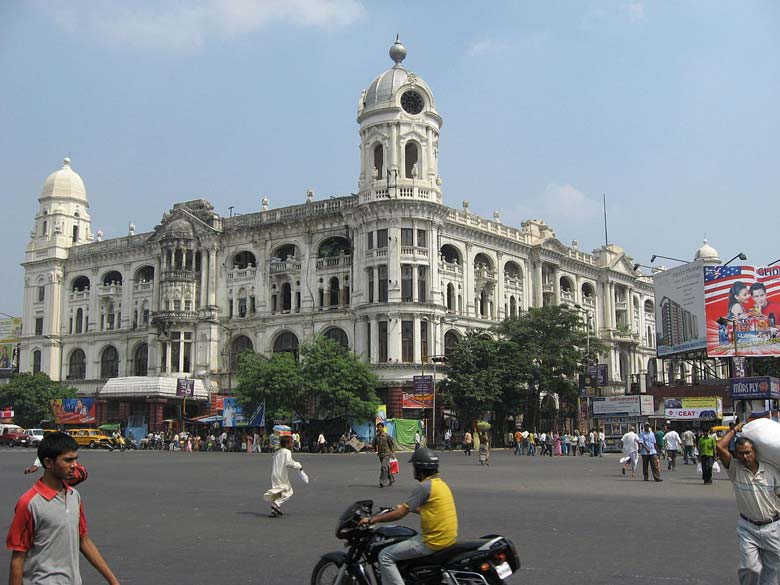
Chowringhee
North Kolkata may be Kolkata’s intellectual heart, but in an age of business-friendly communist governments, the slick commercial area east of the Maidan is the city’s spinal cord. Now technically called Jawaharlal (or J. L.) Nehru Road, Chowringhee runs along the east side of the Maidan, with shops, hotels, and old Victorian buildings lining the other side of the wide pavement. In the evening, hawkers do their best with potential shoppers, and at night, the homeless bed down.
#12. Eden Gardens
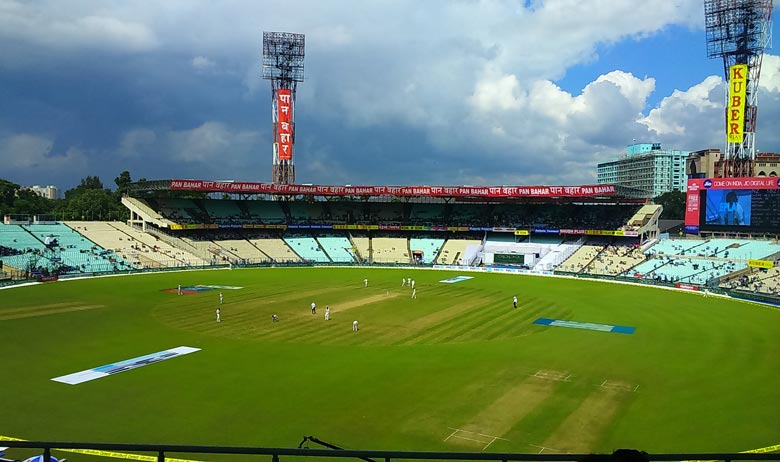
Eden Gardens Stadium
These flower-speckled gardens in the northwest corner of the Maidan are often crowded, but you can still find relief from the busy streets. Don’t miss the picturesque Burmese pagoda.
#13. Fort William
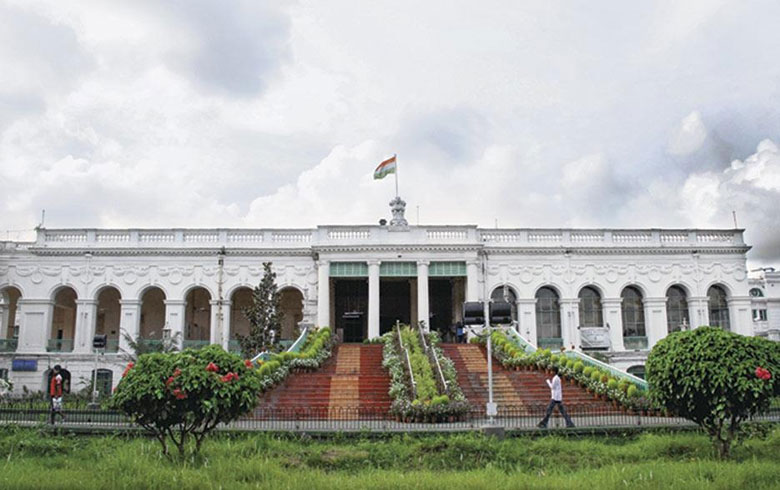
Fort William Kolkata
The irregular septagon south of the Eden Gardens is surrounded by a moat almost 50 ft wide. Begun in 1757 after Robert Clive’s victory over Siraj ud-Daula at Plassey, Fort William was designed to prevent any future attacks. The fort’s walls, as well as its barracks, stables, and Church of St. Peter, have survived to this day chiefly because the fort has, in fact, never been attacked. The Indian government still uses the fort, but it’s closed to the public.
#14. General Post Office (GPO)
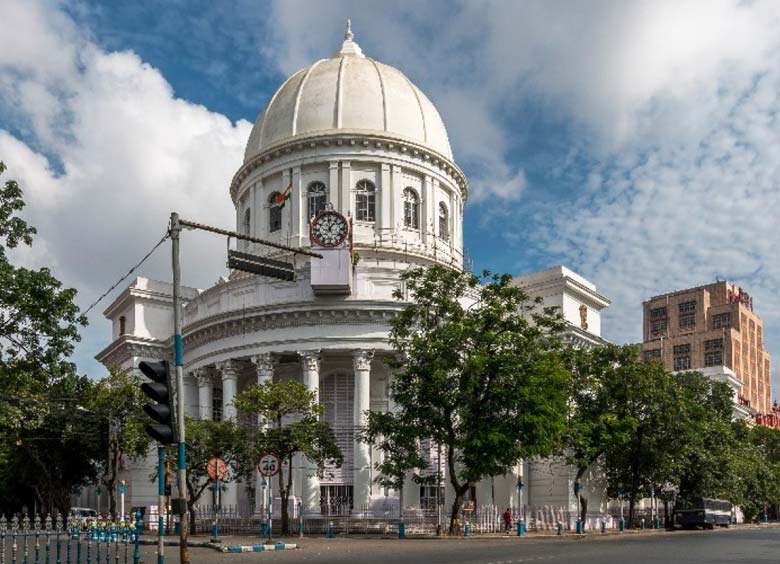
General Post Office
This building’s massive white Corinthian columns rest on the site of the original Fort William, where the British were attacked in 1756 and many officers were imprisoned by Siraj ud-Daula in the infamous “Black Hole of Kolkata,” a tiny space that caused most of the group to suffocate.
#15. Indian Museum
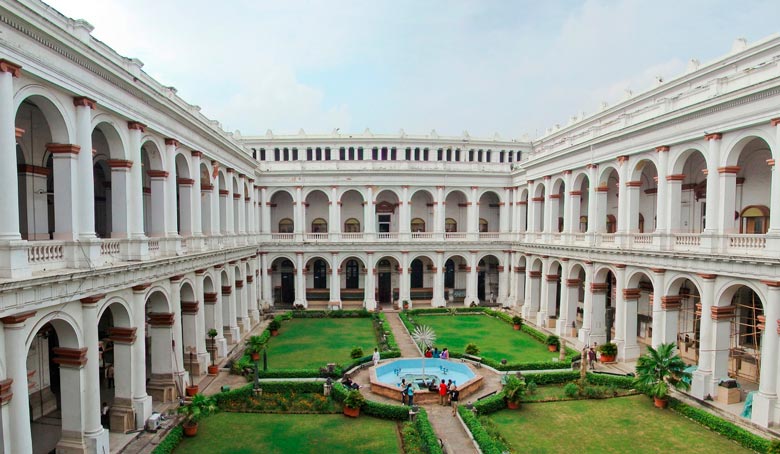
indian museum kolkata
India’s oldest museum has one of the largest and most comprehensive collections in Asia, including one of the best natural-history collections in the world. It’s known locally as Jadu Ghar, the “House of Magic.” The archaeology section has representative antiquities from prehistoric times to the Mogul period, including relics from Mohenjodaro and Harappa, the oldest excavated Indus Valley civilizations. The southern wing includes the Bharhut and Gandhara rooms (Indian art from the 2nd century BC to the 5th century AD), the Gupta and medieval galleries, and the Mogul gallery.
The Indian Museum also houses the world’s largest collection of Indian coins; ask at the information desk for permission to see it. Gems and jewelry are on display. The art section on the first floor has a good collection of textiles, carpets, wood carving, papier-mâché figures, and terra-cotta pottery. A gallery on the third floor contains exquisite Persian and Indian miniature paintings, and banners from Tibetan monasteries. The anthropology section on the first floor is devoted to cultural anthropology, though the museum plans to establish India’s first comprehensive exhibit on physical anthropology; some interesting specimens are an Egyptian mummy donated in 1880 by an English seaman, a fossilized 200-million-year-old tree trunk, the lower jaw of a 26-m (84-ft) whale, and meteorites dating back 50,000 years.
#16. Maidan
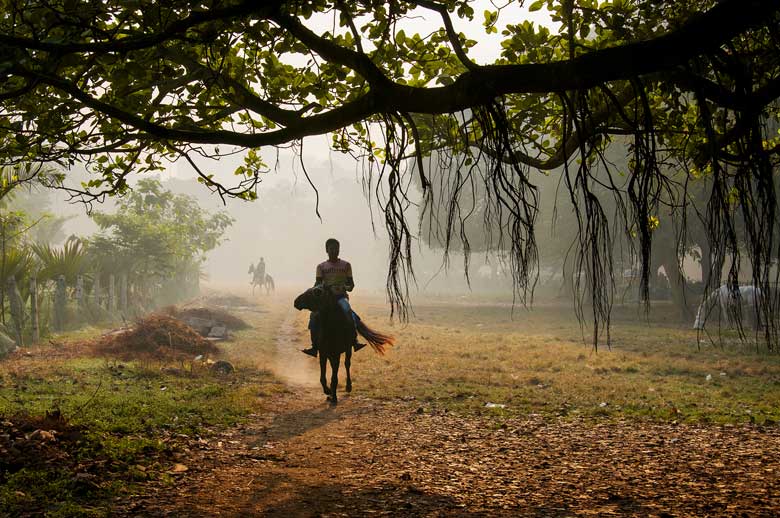
Maidan Kolkata
Known as Kolkata’s “green lung,” the city’s expansive park is dotted with some of the its most significant attractions and is highly prized by its citizens, who turn out in the morning for sports and pony rides, in the evening for snacks and carriage rides. The area came into existence when forests were cleared to give Fort William a clear line of fire.
#17. Ochterlony Monument
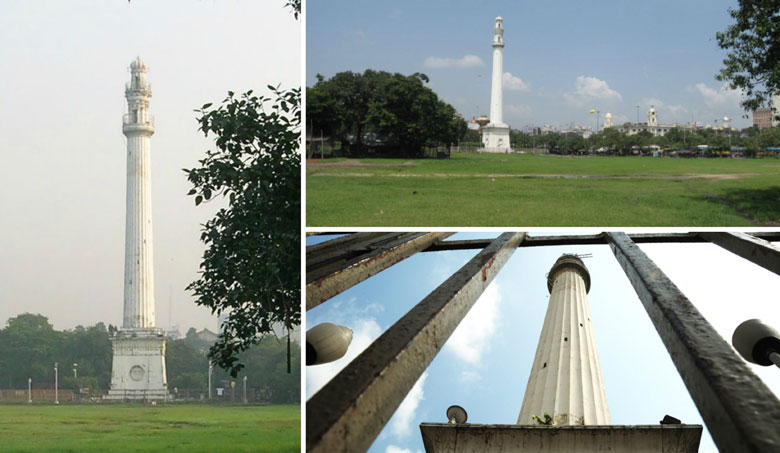
Ochterlony kolkata
On the north end of the Maidan stands a 148-ft pillar commemorating Sir David Ochterlony’s military victories over the Nepalese in the border war of 1814-16. Built in 1828, the impressive monument has a curious design: the base is Egyptian, the column is Syrian, and the cupola is Turkish. Now officially called the Shahid Minar (Martyr’s Tower), it’s been the site of many a political rally and student demonstration during Kolkata’s turbulent post-Independence history.
#18. St. Paul’s Cathedral
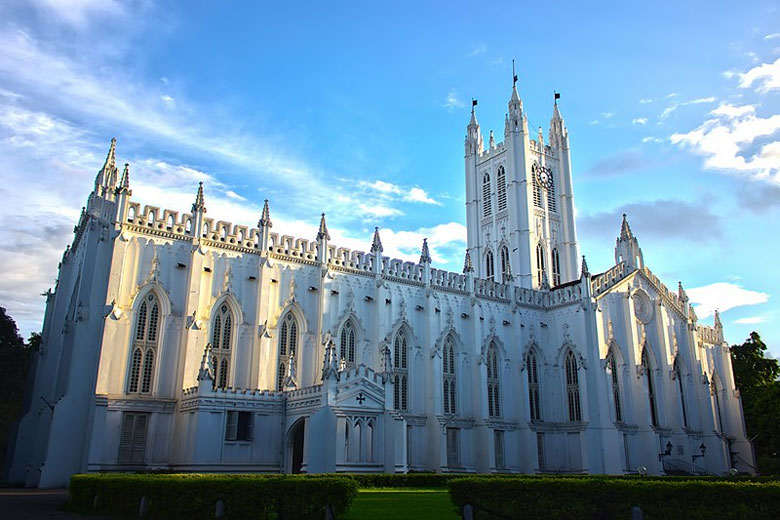
St Paul’s Cathedral
Completed in 1847, the cathedral now has a steeple modeled after the one at Canterbury; previous steeples were destroyed by earthquakes in 1897 and 1934. Florentine frescoes, the stained-glass western window, and a gold communion plate presented by Queen Victoria are prize possessions. Interestingly, birds congregate in the interior eaves.
#19. South Park Street Cemetery
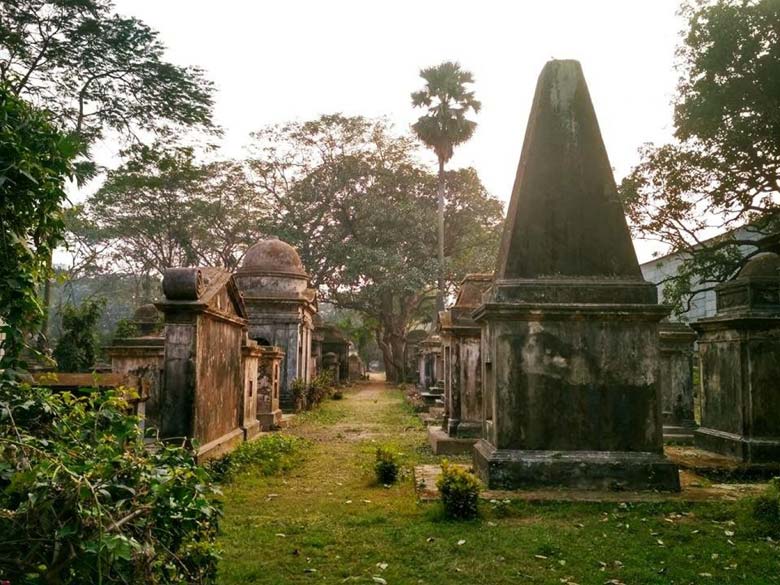
south park street cemetery kolkata
The graves and memorials here form a repository of British imperial history. People who lived within the Raj from 1767 on are buried here, and in the records of their lives you can see the trials and triumphs of the building of an empire.
#20. Victoria Memorial
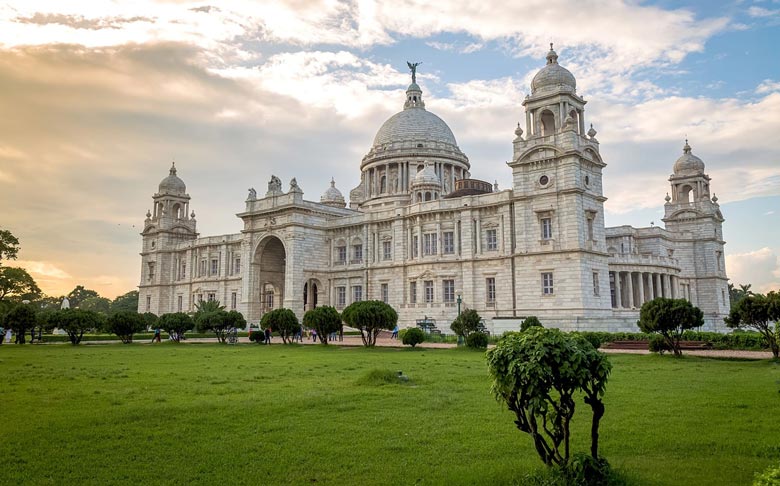
Victoria Memorial Kolkata
This massive, white marble monument was conceived in 1901 by Lord Curzon and built over a 20-year period. Designed in a mixture of Italian Renaissance and Saracenic styles, surrounded by extensive, carefully manicured gardens, and preceded by a typically sober statue of Victoria herself, it remains the single greatest symbol of the British Raj. Inside the building is an excellent museum of the history of Kolkata (there’s a lot to read, but it will really sharpen your sense of the British-Bengali relationship) and various Raj-related exhibits including Queen Victoria’s writing desk and piano, Indian miniature paintings, watercolors, and Persian books. Cameras and electronic equipment must be left at the entrance.
#21. Writers’ Building
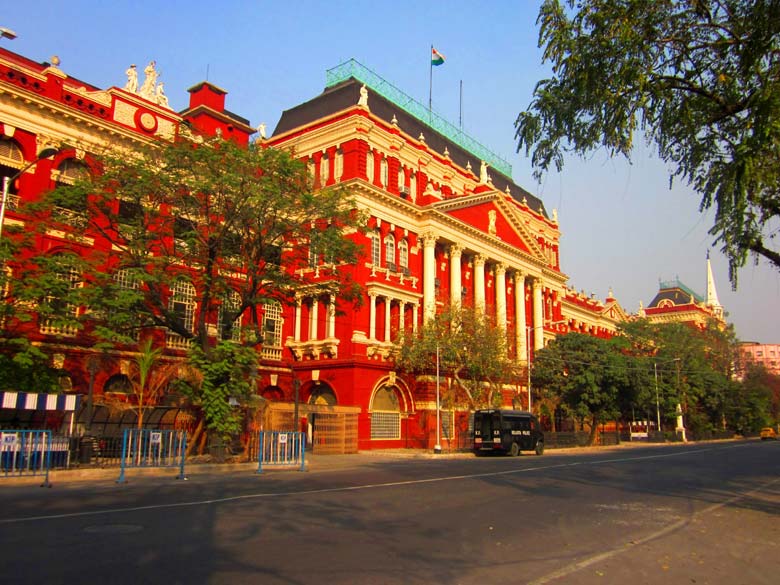
Writers’ Building Kolkata
The original “writers” were the clerks of the British East India Company. Now a government office building, this dramatically Baroque edifice is closed to the public.
Tourist Places in Southern Kolkata
Kolkata’s rich and powerful moved consistently south as the city grew more and more crowded and unpleasant. Here you’ll see an interesting mix of large colonial homes, modern hotels and businesses, open space, and crowded temple areas.
#22. Indian Botanical Gardens
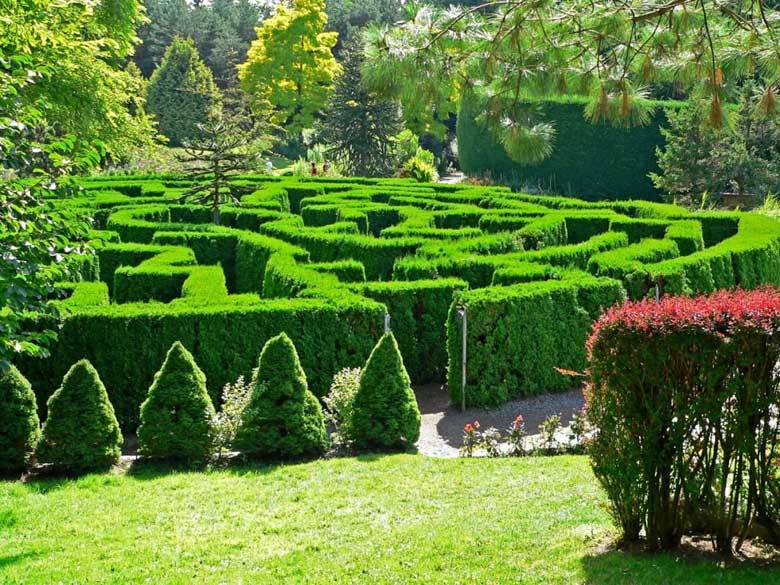
Indian Botanical Gardens Kolkata
Across the Second Hooghly Bridge (Vivekananda Setu) in Howrah are the massive botanical gardens, first opened in 1786. Darjeeling and Assam teas were developed here. The gardens’ banyan tree has one of the largest canopies in the world, covering a mind-boggling 1,300 square ft. The gardens are so huge that you can even find a place to relax on Sunday, when locals turn out in droves to enjoy their day off.
#23. Kalighat Kali Temple
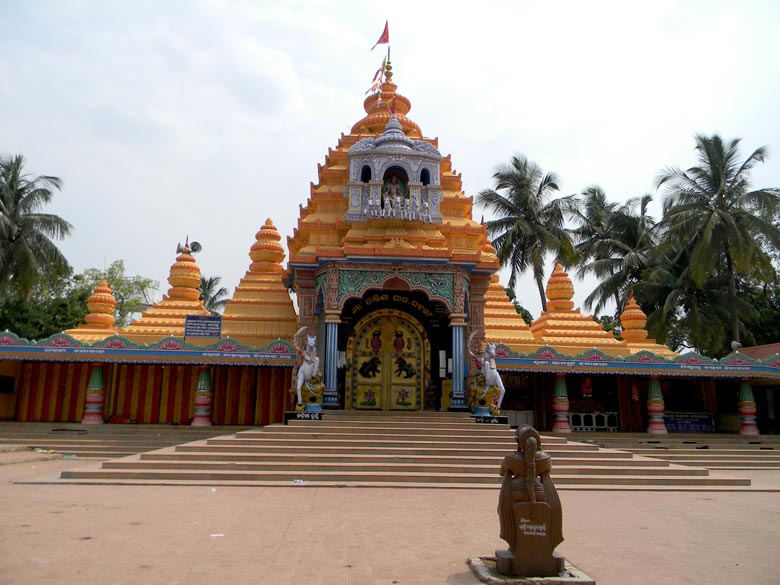
Kalighat Kali Temple Kolkata
Built in 1809, the Kali is one of the most significant pilgrimage sites in India, with shrines to Shiva, Krishna, and Kali, the patron goddess of Kolkata. Human sacrifices were reputed to be common here during the 19th century, but only goats are slaughtered now, and then offered to Kali with Ganges water and bhang (uncultivated hemp). The building, though surrounded by others, repays a close look with thin, multicolored layers of painted trim and swaths of tile-work. Only Hindus are allowed in the inner sanctum, but the lanes and brilliant flower markets surrounding the temple have a lovely atmosphere in themselves.
#24. National Library
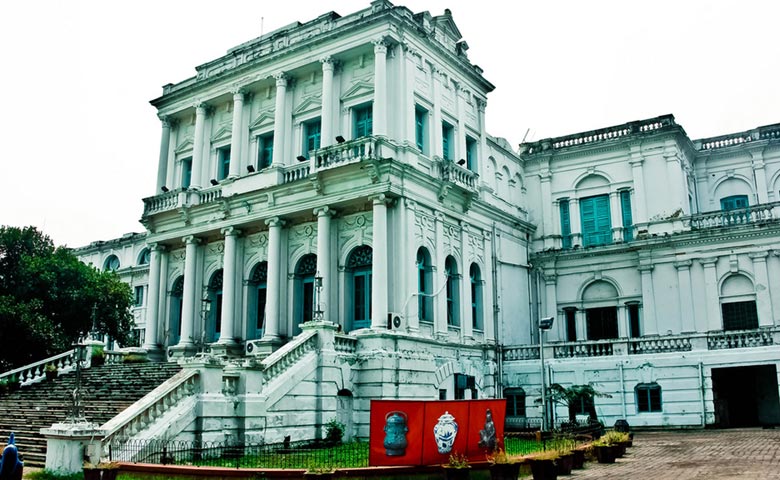
National Library Kolkata
Once home to the lieutenant governor of Kolkata, this hefty neo-Renaissance building houses miles of books and pleasant reading rooms. The rare-book section holds some particularly significant works, adding to the importance of this 2-million-volume facility. There are no displays as such, but the grounds make for a pleasant short walk in scholarly company.
#25. Nirmal Hirday (Pure Heart)
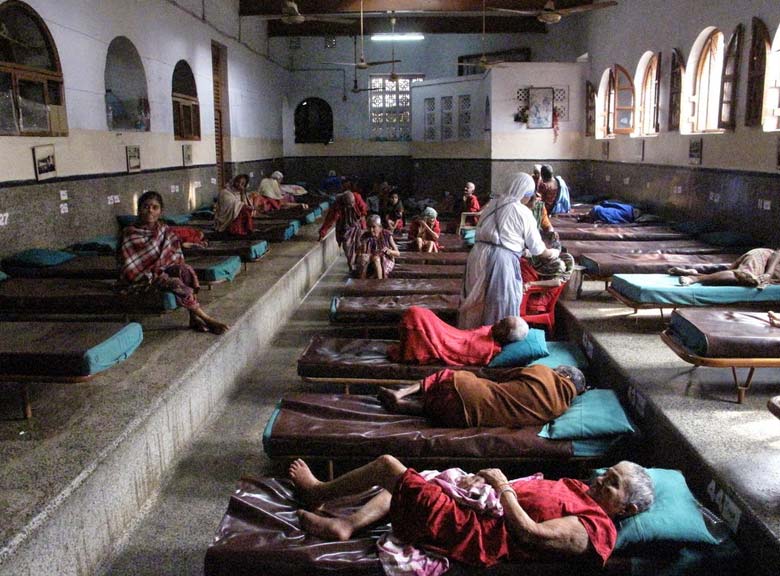
Nirmal Hriday Kolkata
Mother Teresa’s first home for the dying is now one of 300 affiliated organizations worldwide that care for people in the direst need. Learn more about Mother Teresa’s work at the headquarters of the Missionaries of Charity It can be inspiring to see the joy among the people in one of the missionaries’ homes or refuges. Mother Teresa is buried in this building—her home for 44 years—in what was formerly the cafeteria.
For more information on top 25 tourist places to visit in Kolkata , call Swan Tours, One of the leading Travel agents in India since 1995.
